It may seem surprising that evergreen euphorbias aren’t used more often in commercial and public landscapes, where year-round good looks and ease of maintenance are so highly valued.
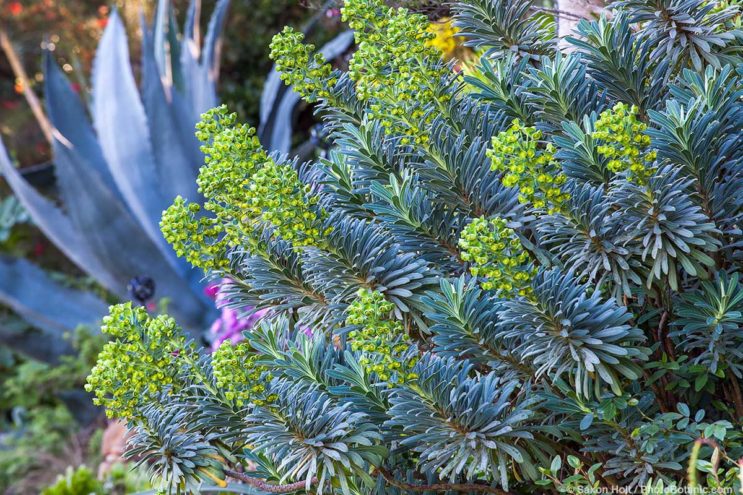
Euphorbia characias (Mediterranean spurge)
All of these evergreen subshrubs have fairly predictable shapes and sizes, a neat, almost architectural habit, and extraordinary color combinations that both offset and complement many other plants. Although the floral show is a spring and summertime event, the sculptural quality of the leaves and stems makes evergreen euphorbias especially effective in the winter garden.
Perhaps the failure to include the shrubby euphorbias in commercially maintained landscapes derives from the fact that their care, although minimal, does require that the gardener know something about the plant in hand. Euphorbias can’t be managed with the same careless abandon as plants more common in the commercial landscape trade.
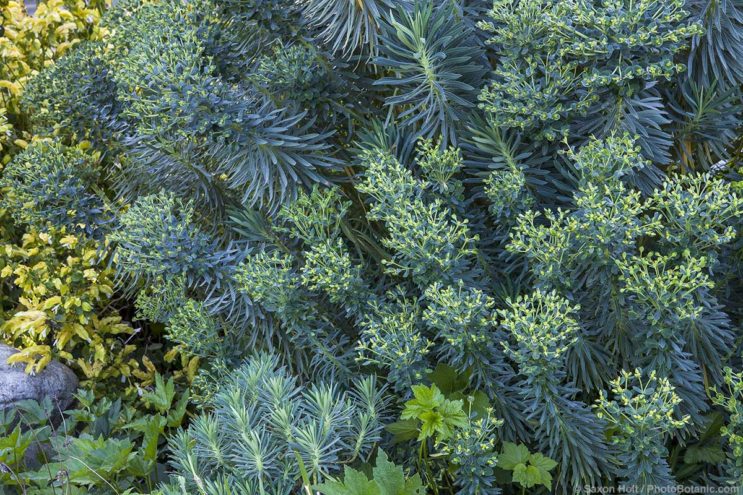
Euphorbia characias subsp. wulfenii
Perennial euphorbias are either deciduous or evergreen, and among the evergreens there are plants with biennial stems and others with stems that remain productive for more than the current year.
Deciduous euphorbias (e.g., E. griffithii) can be cut to the ground in fall. Evergreens without biennial stems (e.g., E. mellifera) are tip pruned after flowering to remove only the spent inflorescences. With biennial evergreens (e.g., E. characias, E. amygdaloides, E. rigida, etc.) spent stems are cut back to the base after flowering, making room for new stems already emerging as older stems begin to turn brown.
Among evergreen euphorbias with biennial stems, Euphorbia characias, its subspecies wulfenii, and their many cultivars are the most commonly grown in gardens. A mainstay of perennial borders in the late 19th and early 20th centuries, E. characias is native to the Mediterranean region and is commonly called Mediterranean spurge. The species has blue-green, linear leaves spirally arranged on upright, 3- to 4-foot stems topped in spring and summer with chartreuse bracts that appear to be petals of an improbably outsized flower.
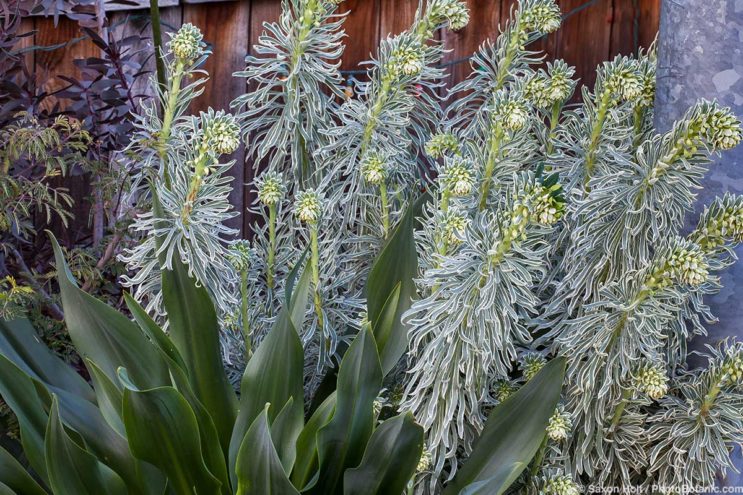
Euphorbia characias ‘Tasmanian Tiger’
Cultivars of Euphorbia characias, many derived from subspecies wulfenii, include more compact plants and plants with variegated foliage. ‘Black Pearl’ is 1-2 feet tall and 2-3 feet wide, half the size of the species and presumably named for the purplish black “eyes” so decoratively displayed within the lime green bracts. ‘Silver Swan’, ‘Tasmanian Tiger’, and ‘Glacier Blue’ are 2-3 feet tall and variegated, the linear, gray-green or bluish green leaves and bracts adorned with silvery or creamy white margins. All forms of E. characias self-sow freely if allowed to go to seed and all need sun and good drainage.
Euphorbia amygdaloides, native to woodlands of southern Europe and western Asia, is another plant with biennial stems, this one preferring part shade or dappled sun and a great candidate for dry shade under deciduous trees. The species is 2-3 feet tall and spreading by runners, with dark green leaves and chartreuse bracts. Plants are most commonly available as variety robbiae, a bit lower growing and spreading even more rapidly, best used as a groundcover in shade. The cultivar ‘Purpurea’ has dark maroon leaves, an unforgettable combination with the lime green bracts.
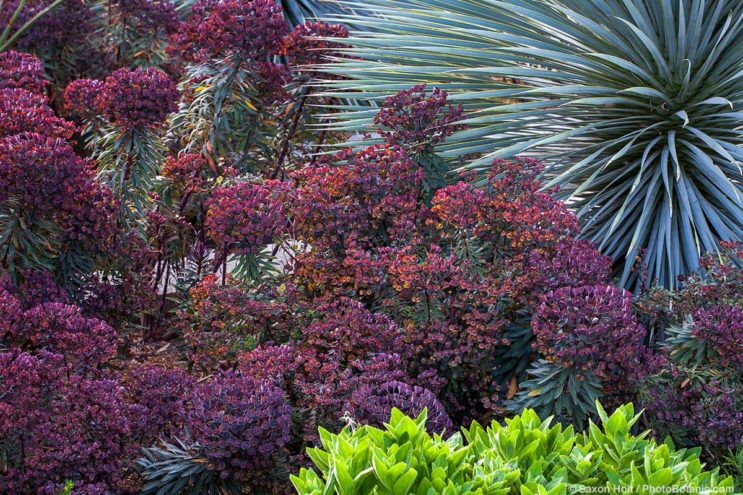
Euphorbia ‘Nothowlee’ (Blackbird spurge)
Euphorbia x martinii, a hybrid of E. amygdaloides and E. characias ssp. characias, is 1-2 feet tall and wide with dark gray-green leaves and chartreuse bracts. ‘Ascot Rainbow’ has variegated leaves. Tiny Tim (‘Waleutiny’) makes a neat foot-tall mound of narrow, blue-green leaves and greenish yellow bracts with red centers. E. Blackbird (‘Nothowlee’), a hybrid of E. x martinii and E. amygdaloides, is 2 feet tall and 3 feet wide with dark purplish, almost black, leaves on red stems and chartreus flowers in late winter or early spring.
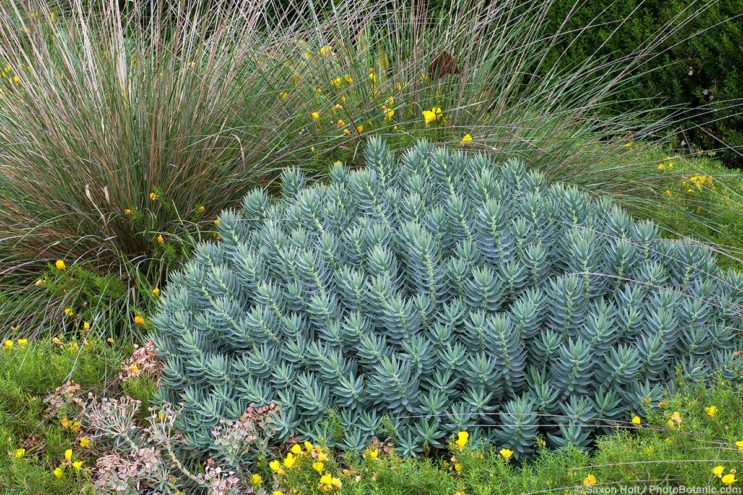
Euphorbia rigida (silver spurge)
Euphorbia myrsinites and E. rigida, the former with lax and trailing stems and the latter a decisively upright perfect mound, both bear steely blue-gray leaves that are almost succulent. Flowers emerge lime green and mature through a series of delicate pinks and yellows as they age, imploring the gardener to let them go to seed if only to witness the evolving show. Both seed about if not deadheaded, E. myrsinites so prolifically that tiny offspring appear 15-20 feet away, hopscotching around the garden from one new plant to another. They are easy to pull but require constant vigilance.
It must be said that euphorbias of all kinds have a sticky white sap that flows freely when stems are cut and that some people are highly sensitive to this latex-like compound. I have never had any reaction to this sap, but I do wear gloves when pruning them.
Also, if your children or pets tend to randomly taste-test plants, euphorbias are among the many plants you should not include in your garden. Wild or semi-wild animals such as deer have no difficulty distinguishing toxic from edible and will not touch them.
One final note: Euphorbias are noted for spreading, some invasively, others not so much. They should not be planted anywhere near wildlands or even too close to your neighbor’s yard.


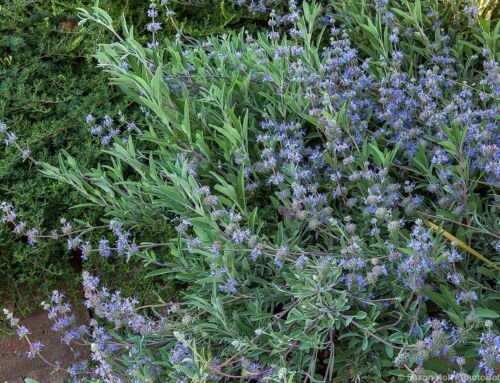
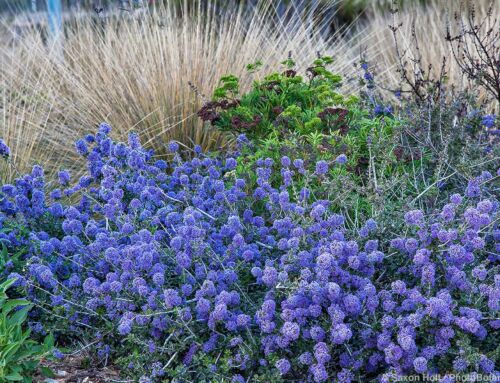
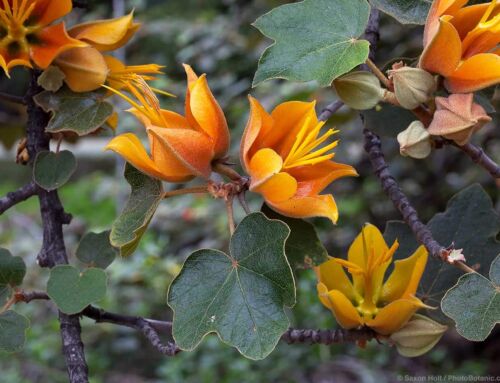
Leave A Comment